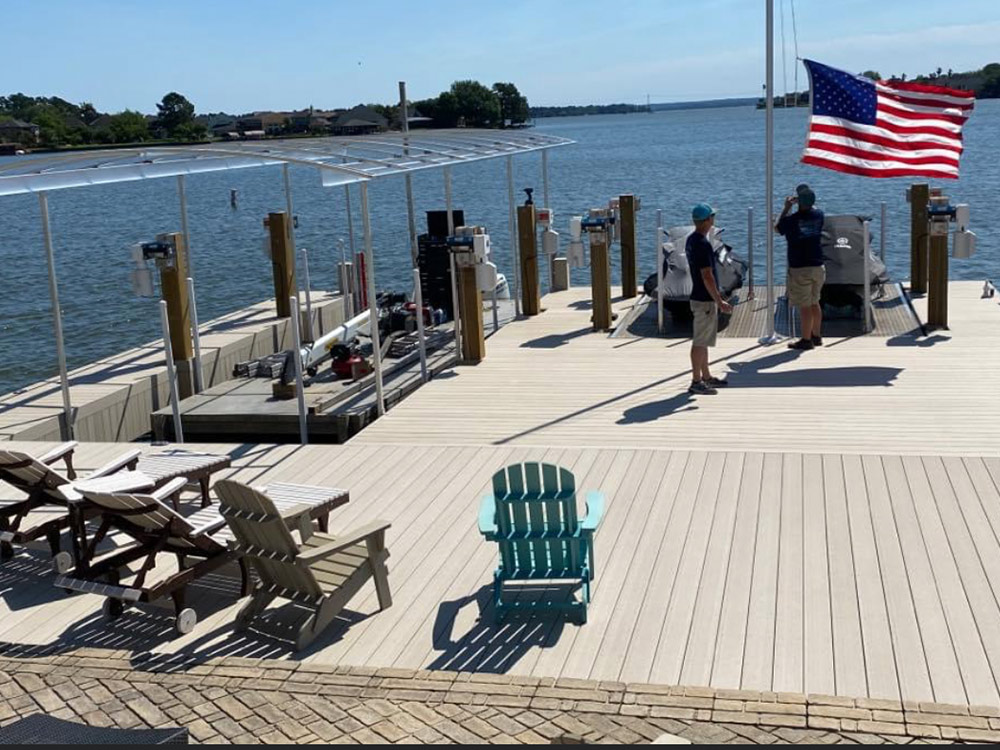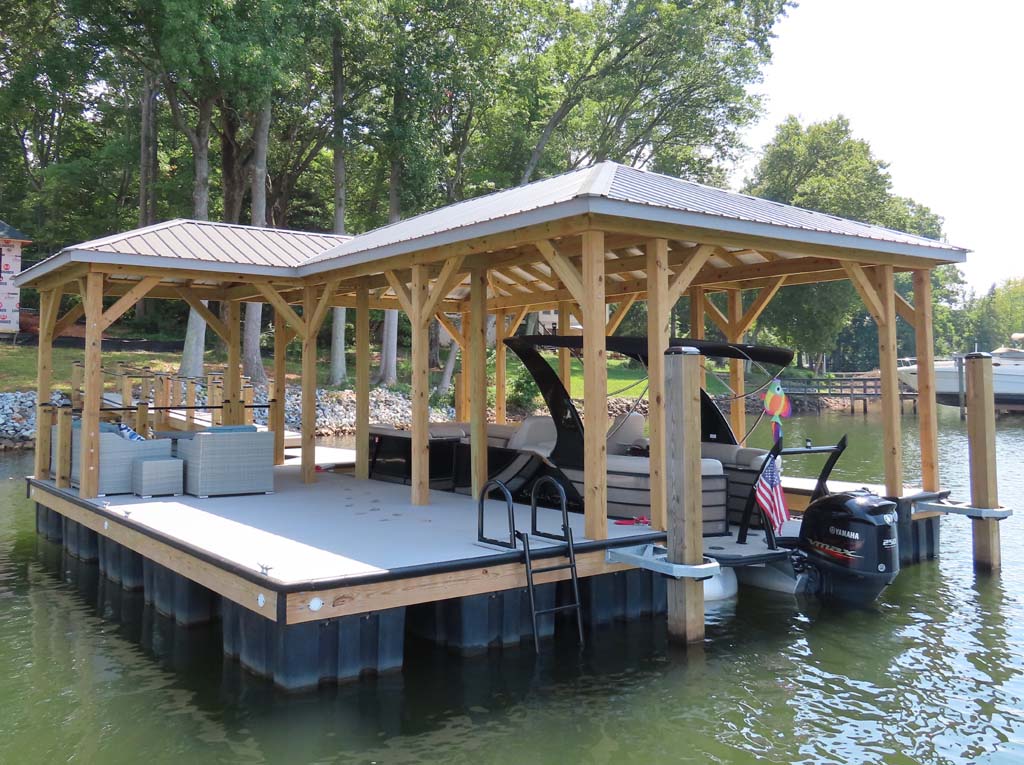Exactly How to Address Common Dock Repair Work Issues for Safe Water Tasks

Identifying Common Dock Issues
Determining typical dock problems is crucial for maintaining the performance and safety and security of your waterfront property. Regular evaluations can aid uncover problems prior to they become severe, ensuring both the durability of the dock and the safety of those that use it. One common concern is loosened or rusty bolts. Over time, screws, bolts, and other bolts can come to be loosened because of continuous exposure to water and weather aspects, bring about structural instability.
An additional typical problem is the degradation of flotation devices. These tools are important for keeping the dock buoyant, and any damage or leaks can create the dock to listing or sink. Frequently examining for leakages or water logged drifts can preempt more significant concerns.
In addition, algae and barnacle buildup on the dock's surface area can produce harmful and slippery problems. This biofouling not only presents a threat to individuals yet can additionally accelerate the wear and tear of the dock products.
Lastly, evaluating for signs of rust on metal elements is necessary. Corrosion can jeopardize the integrity of the dock's framework, making it harmful. By routinely recognizing these common dock problems, you can guarantee that your dock continues to be safe and practical for many years ahead.
Fixing Rotting Timber
When dealing with the issue of rotting timber on your dock, it is critical to act swiftly to avoid additional deterioration. Begin by thoroughly evaluating the entire structure to determine all affected locations. Utilize a screwdriver to penetrate the wood; if it sinks in easily, the timber is likely rotted and requires immediate focus.
When determined, get rid of the decayed sections using a saw or carve. Make sure to reduce to healthy and balanced, solid wood, ensuring you eliminate all endangered material. After elimination, deal with the remaining timber with a wood preservative to avoid future rot. This treatment will assist guard against moisture, which is the main source of timber degeneration.
Next, change the gotten rid of sections with marine-grade lumber or pressure-treated wood, which are much more immune to water damage. Safeguard the new pieces with galvanized or stainless-steel fasteners to stop deterioration. Additionally, applying a water resistant sealer to the new timber can offer an additional layer of defense.
Securing Loosened Boards
Just how do you ensure your dock remains useful and safe for all its customers? One essential aspect is safeguarding loosened boards, which can or else position significant threats. Loosened boards not just boost the threat of tripping but can also endanger the architectural integrity of the entire dock.

For reinstallation, use galvanized or stainless steel screws, as these products supply remarkable resistance to rust in marine settings. Make sure the screws are long enough to penetrate deep right into the underlying support structure, yet not so lengthy that they extend through the dock's surface area. Pre-drilling pilot openings can help protect against the timber from splitting.
Lastly, keep a routine evaluation timetable to determine and deal with any kind of new issues without delay. By protecting loose boards properly, you contribute to the total security and long life of your dock, making it a trusted platform for water tasks.
Stabilizing Unstable Pilings
Guaranteeing the security of unsteady pilings is vital to maintaining a secure and functional dock. Unsteady pilings can endanger the entire framework, posing considerable Full Report risks to individuals and potentially causing costly repair services. The initial step in supporting these important elements is a comprehensive assessment. Examine the pilings for indications of rot, damage, or changing. Utilize a degree to look for upright alignment and ensure they are driven deep enough right into the substrate to offer appropriate assistance.
If the pilings are located to be unsteady, one reliable approach for support is making use of added supporting. Cross-bracing with dealt with lumber or galvanized metal can considerably boost stability. Support the braces securely to both the pilings and the dock framework to distribute tons uniformly.

Routine maintenance and regular review of the pilings' security are critical to ensuring long-lasting dock safety and performance.
Replacing Rusty Hardware
Dealing with unsteady pilings is just one facet of maintaining a dock's stability; an additional critical issue is replacing corroded hardware. In time, exposure to moisture and salt can lead to the oxidation and corrosion of screws, braces, and screws, jeopardizing the entire framework's safety and security. Routine inspection that site for corrosion is important, especially after extreme weather or seasonal modifications.
When rustic hardware is identified, immediate activity is required. Begin by picking marine-grade stainless steel or galvanized equipment, both designed to stand up to the severe marine setting. Make sure that you have the suitable devices, such as screwdrivers and wrenches, to securely get rid of the old, corroded pieces without causing more damage to the dock.
After getting rid of the rusty hardware, thoroughly clean the affected locations to remove any recurring rust or debris. Apply a rust-inhibiting guide to revealed steel surfaces prior to installing the new equipment. Tighten up all components securely to avoid future helping to loosen, and periodically examine the fittings to make certain continuous security.
Changing corroded equipment not only extends the dock's lifespan but also significantly improves the safety and security of water activities. By proactively taking care of deterioration, you safeguard both the framework and its customers, making certain a protected and delightful waterfront experience.
Final Thought
Regular examinations and maintenance are essential to resolve typical dock repair work issues and ensure secure water activities. Such aggressive procedures contribute to the general safety and capability of dock structures, visit this page cultivating a protected setting for water-based activities.
Making certain the security of water tasks hinges dramatically on the proper upkeep and repair work of anchors (Dock Repairs). These devices are crucial for keeping the dock resilient, and any damage or slits can cause the dock to checklist or sink. By routinely determining these usual dock problems, you can ensure that your dock continues to be practical and safe for years to come
Guaranteeing the security of unstable pilings is paramount to preserving a secure and functional dock.Normal inspections and maintenance are crucial to resolve common dock fixing problems and make certain safe water activities.